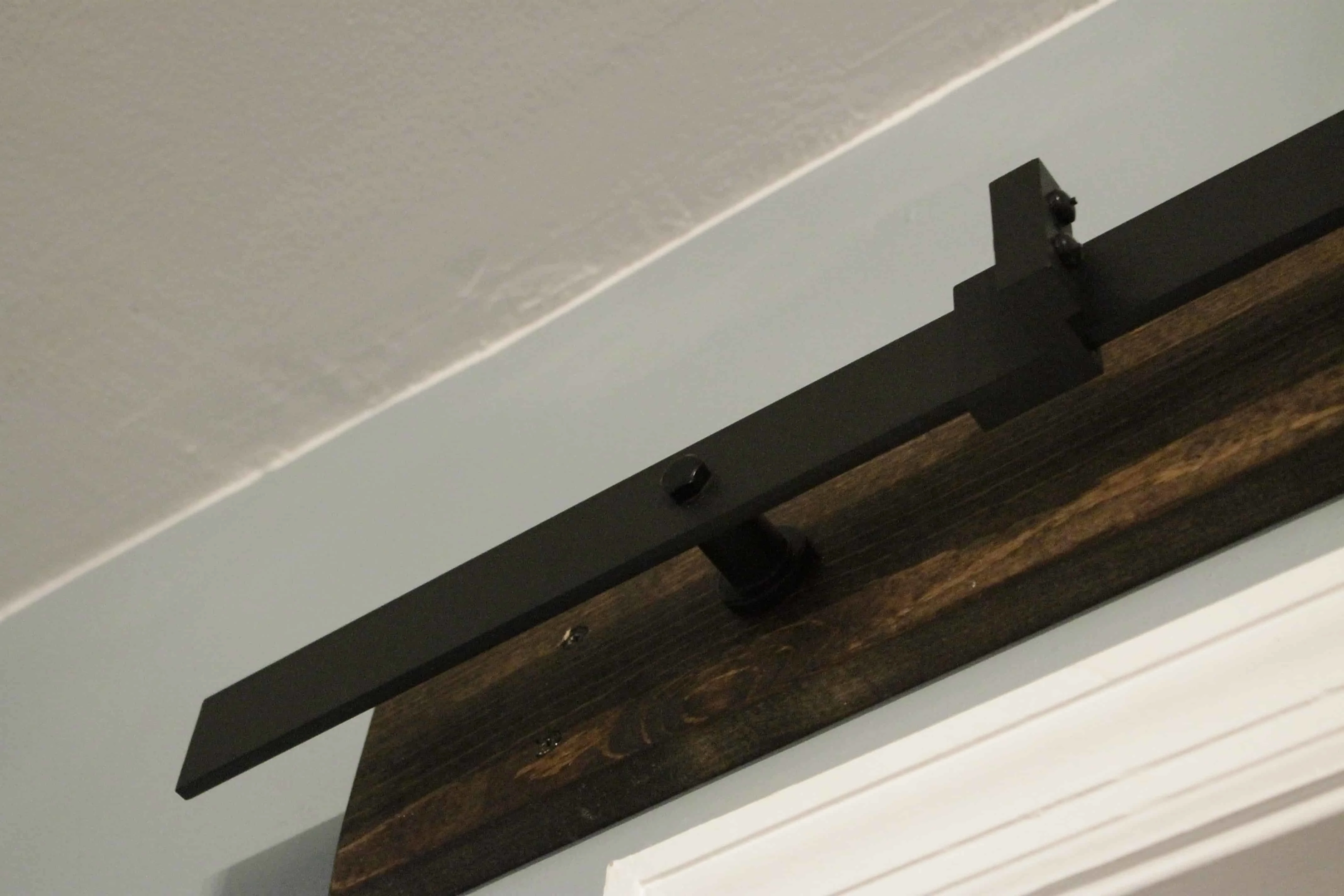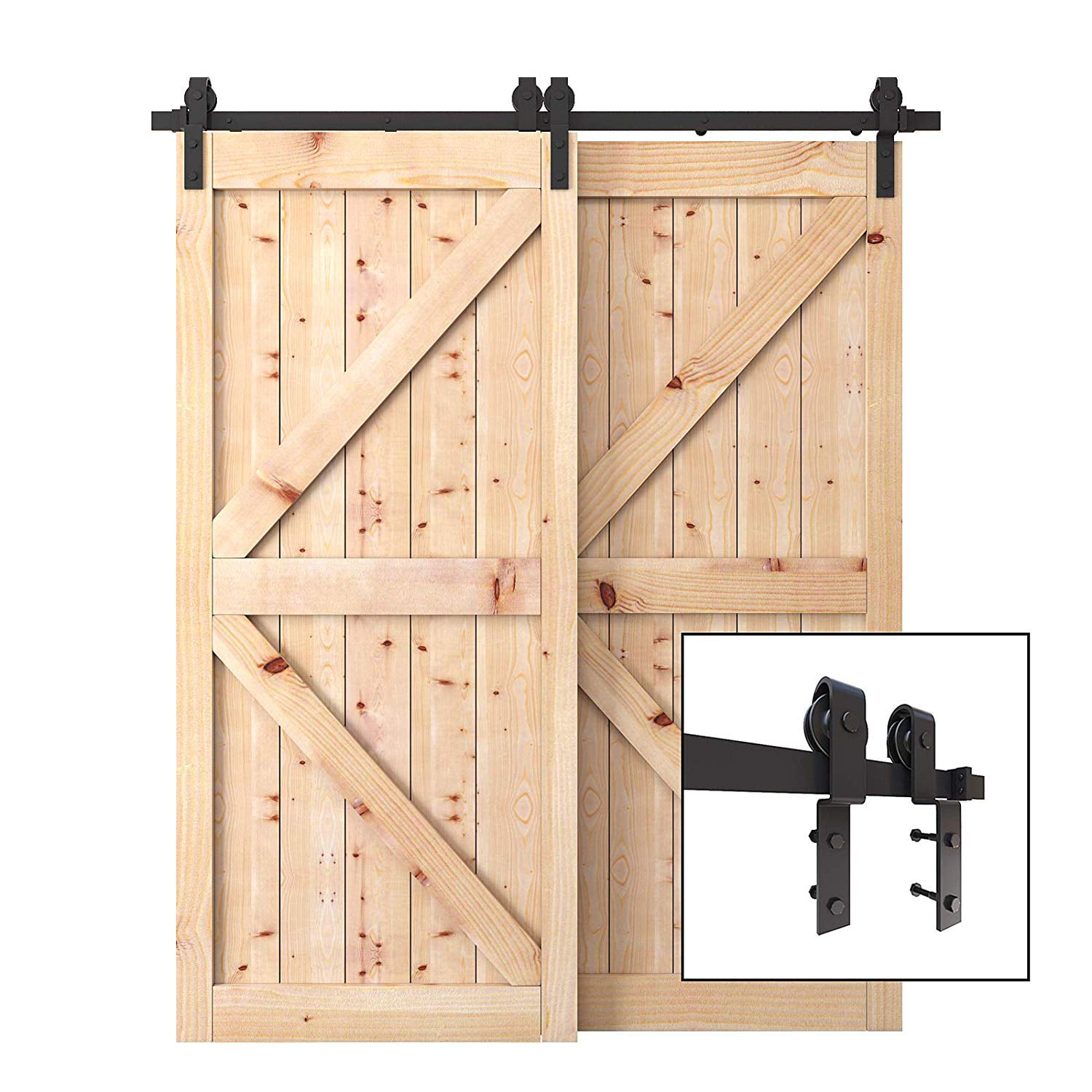Types of Cabinet Size Barn Door Hardware

Cabinet-sized barn door hardware offers a blend of practicality and aesthetic appeal, transforming ordinary cabinets into stylish focal points. The selection process, however, requires careful consideration of several factors, including material, weight capacity, and installation method. Understanding these aspects ensures a smooth installation and a long-lasting, functional addition to your kitchen or bathroom.
Materials Used in Cabinet Barn Door Hardware
Cabinet barn door hardware is typically crafted from metal or wood, each offering unique properties. Metal hardware, often steel or zinc alloy, provides durability and a sleek, modern look. These materials are resistant to wear and tear, ensuring longevity. Wood hardware, usually made from hardwoods like oak or maple, offers a more rustic and traditional aesthetic. The choice depends largely on the overall style of the cabinetry and the surrounding décor. Metal options often boast a variety of finishes, such as brushed nickel, oil-rubbed bronze, or matte black, enhancing design versatility. Wood hardware, conversely, might be stained or painted to complement the existing color scheme.
Weight Capacity of Different Hardware Types
The weight capacity of cabinet barn door hardware varies significantly based on the material and design. Metal hardware generally supports heavier doors compared to wood hardware due to its inherent strength. For instance, a robust metal track system might comfortably handle a cabinet door weighing up to 50 pounds, while a wooden track system might have a capacity closer to 30 pounds. Always check the manufacturer’s specifications to determine the weight capacity before purchase and installation. Underestimating the weight capacity can lead to hardware failure and potential damage to the cabinet. Consider the weight of the door itself, plus any added weight from decorative elements or heavy-duty hardware.
Installation Methods for Cabinet Barn Door Hardware
Cabinet barn door hardware is typically installed using either a surface mount or a flush mount method. Surface mount installation involves attaching the hardware directly to the surface of the cabinet, leaving the track visible. This is a simpler and faster installation method, ideal for those with limited DIY experience. Flush mount installation, however, requires more precision and involves embedding the track into the cabinet, resulting in a cleaner, more integrated look. This method necessitates more advanced carpentry skills and often requires pre-planning and precise measurements to ensure a seamless integration. The choice between these methods depends on the desired aesthetic and the installer’s skill level.
Comparison of Cabinet Barn Door Hardware
| Material | Weight Capacity (lbs) | Installation Type | Price Range ($) |
|---|---|---|---|
| Steel | 30-50 | Surface Mount, Flush Mount | 20-100 |
| Zinc Alloy | 25-40 | Surface Mount | 15-75 |
| Oak | 15-30 | Surface Mount | 30-60 |
| Maple | 15-25 | Surface Mount | 25-50 |
Choosing the Right Hardware for Your Cabinets

Selecting the perfect cabinet barn door hardware isn’t simply about aesthetics; it’s about ensuring functionality, longevity, and a seamless blend of form and function within your kitchen or bathroom design. The right hardware will glide smoothly, support the weight of your cabinet doors, and enhance the overall aesthetic appeal of your space. Choosing incorrectly can lead to frustrating sticking, squeaking, or even hardware failure.
Cabinet size barn door hardware – The process of selecting the appropriate hardware hinges on several key considerations. Understanding your cabinet’s dimensions, weight, and the desired aesthetic is crucial for a successful installation and a beautiful, functional end result. Failing to account for these factors can result in a system that is either overloaded, underperforming, or simply aesthetically discordant with the overall design scheme.
Cabinet Size and Weight Considerations, Cabinet size barn door hardware
The weight of your cabinet doors is the most critical factor in hardware selection. Heavier doors necessitate stronger hardware capable of supporting the load without sagging or binding. For instance, a heavy solid wood door will require a more robust system than a lightweight glass-fronted cabinet. Hardware manufacturers often specify weight capacities for their products; it’s imperative to select hardware that exceeds the weight of your cabinet doors by a comfortable margin – a safety factor of at least 20% is recommended. Consider also the size of your cabinets; larger doors generally require longer tracks and sturdier rollers to ensure smooth operation. For example, a 36-inch wide cabinet door would demand a longer track than a 24-inch wide door. Incorrectly sizing the track can lead to the door running off the track or experiencing binding.
Aesthetic Considerations
The aesthetic appeal of your cabinet barn door hardware is a significant factor in the overall design. The hardware’s style should complement the existing cabinetry and overall kitchen or bathroom design. Consider the finish: matte black hardware offers a modern, minimalist feel, while brushed nickel provides a more traditional look. Oil-rubbed bronze offers a rustic charm, and polished chrome provides a sleek, contemporary aesthetic. The hardware should visually integrate seamlessly with the overall style of your space, rather than jarringly clashing with it. Imagine, for example, sleek, modern chrome hardware juxtaposed against antique wooden cabinets; the effect might be less than harmonious.
Door Thickness and Track Length
The thickness of your cabinet doors directly impacts the type of hardware you can use. The hardware must be compatible with the door’s thickness to ensure a secure and stable fit. Most hardware kits specify a range of compatible door thicknesses. Failure to check this compatibility can result in a loose or wobbly installation. Track length is also crucial. The track must be long enough to accommodate the full swing of the door, allowing it to open and close completely without obstruction. A track that is too short will limit the door’s range of motion. For example, a 36-inch wide door will require a track longer than 36 inches to account for the door’s swing arc. Always measure carefully and select a track that offers sufficient clearance.
Factors to Consider When Choosing Cabinet Barn Door Hardware
Before making a purchase, carefully weigh the following factors. Overlooking even one of these can lead to disappointment or functional issues.
- Weight Capacity: Ensure the hardware’s weight capacity significantly exceeds the weight of your cabinet doors. Example: A hardware set with a 100-pound capacity for doors weighing 75 pounds.
- Door Thickness: Verify the hardware is compatible with the thickness of your cabinet doors. Example: Hardware specified for doors 1-3/4 inches thick.
- Track Length: Choose a track long enough to allow for the full swing of the door without obstruction. Example: A 48-inch track for a 36-inch wide door.
- Style and Finish: Select a style and finish that complements your existing cabinetry and overall design aesthetic. Example: Brushed nickel hardware for a traditional kitchen.
- Material: Consider the durability and longevity of the hardware material. Example: Steel hardware is generally more durable than plastic.
- Installation Difficulty: Assess the ease of installation based on your skill level and available tools. Example: Hardware with clear instructions and readily available replacement parts.
- Budget: Set a realistic budget and compare prices from different manufacturers. Example: Comparing prices of similar hardware from different brands to find the best value.
Installation and Maintenance of Cabinet Barn Door Hardware: Cabinet Size Barn Door Hardware

Installing cabinet barn door hardware successfully hinges on careful planning and precise execution. A smoothly functioning system not only enhances the aesthetic appeal of your kitchen or bathroom but also ensures long-term durability and ease of use. Understanding the installation process and subsequent maintenance is key to maximizing the lifespan and performance of your chosen hardware.
Step-by-Step Installation Guide
Proper installation ensures a long-lasting, smoothly operating cabinet door system. Following these steps will minimize frustration and maximize the hardware’s potential.
- Measure and Mark: Accurately measure the cabinet opening and the door itself. Mark the center point of both the cabinet and the door to serve as your reference for precise alignment. A slight miscalculation can significantly impact the final result.
- Attach the Track: Securely fasten the track to the cabinet frame using appropriate screws. Ensure the track is perfectly level and aligned with the marked center point. This step is crucial for the smooth operation of the door.
- Install the Rollers: Attach the rollers to the top of the door, ensuring they are securely fastened and move freely along the track. Take care to follow the manufacturer’s instructions for proper alignment and attachment. Misalignment here can lead to binding or uneven movement.
- Hang the Door: Carefully lift and hang the door onto the track, making sure the rollers engage smoothly. This may require a second person to assist with balancing the door. Gentle adjustments may be needed to ensure smooth movement.
- Adjust and Test: Once the door is hung, test its movement. Make any necessary adjustments to ensure smooth operation and proper alignment. Slight adjustments to the rollers can often rectify minor issues.
Troubleshooting Common Issues
Several issues may arise during or after installation. Addressing these promptly prevents more significant problems down the line.
- Binding or Sticking: This often results from misalignment, debris, or lack of lubrication. Check for obstructions, realign the track and rollers, and lubricate the system.
- Uneven Movement: This indicates a problem with the track’s levelness or roller alignment. Ensure the track is level and that the rollers are correctly installed and adjusted.
- Loose Hardware: Tighten any loose screws or bolts. Over time, vibrations can loosen fasteners, impacting the door’s stability and smooth operation.
Maintenance and Lubrication
Regular maintenance extends the life of your cabinet barn door hardware.
A simple, annual lubrication will prevent sticking and binding. Apply a small amount of high-quality lubricant (such as silicone spray) to the rollers and track, moving the door back and forth to distribute the lubricant evenly. Avoid using excessive amounts, as this can attract dust and debris.
Visual Installation Guide
Imagine a perfectly level horizontal line representing the top edge of your cabinet. At the exact center of this line, mark a point. This is your reference point. Now, imagine a rectangular track being carefully secured along this line, perfectly aligned with the central point. Next, visualize the cabinet door, also centered. Small, smooth rollers are attached to the top of the door. As you lift the door, these rollers seamlessly glide onto the track, aligning with the central point. Finally, gently test the door’s movement, ensuring it slides smoothly and effortlessly along the track. Any minor adjustments are easily made by repositioning the rollers or tightening any loose fasteners.
